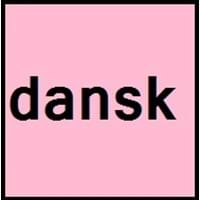Countries
Denmark, European Union, Faroe Islands, Greenland, Nordic Council
Barbados, Belize, Botswana, Cameroon, Canada, Dominica, Fiji, Ghana, India, Ireland, Jamaica, Kenya, Malta, Mauritius, Micronesia, Nigeria, Pakistan, Philippines, Rwanda, Saint Kitts and Nevis, Samoa, Sierra Leone, Singapore, Somaliland, South Africa, South Sudan, Sudan, Tanzania, Trinidad and Tobago, Uganda, United Kingdom, Zambia, Zimbabwe
National Language
Denmark, Faroe Islands, Germany, Greenland
Anguilla, Antigua and Barbuda, Bahamas, Barbados, Belize, Bermuda, Cayman Islands, Gibraltar, Grenada, Guam, Guyana, Jersey, Montserrat, Nauru, Singapore, Trinidad and Tobago, United Kingdom, United States of America
Second Language
Not spoken in any of the countries
India, Nigeria, Pakistan, Singapore
Speaking Continents
Europe, North America, South America
Africa, Asia, Australia, Europe, North America, Oceania, South America
Minority Language
Argentina, Brazil, Canada, Germany, Greenland, Norway, Sweden, United States of America
South Africa
Regulated By
Dansk Sprognævn (Danish Language Committee)
Not Available
Interesting Facts
- Danish, Norwegian and Swedish are mutually intelligible, that means if u learn Danish is almost like learning three languages in one.
- There are 9 vowels in Danish language, which can be pronounced in 16 different ways.
- Most of the English words begin with the letter S than any other letter.
- English is third most commonly spoken language in the world.
Similar To
Norwegian and Swedish
Not Available
Derived From
Old Norse Language
Latin
Alphabets in
Danish-Alphabets.jpg#200
English-Alphabets.jpg#200
Writing Direction
Left-To-Right, Horizontal
Left-To-Right, Horizontal
Thank You
Mange tak
Thank you
How Are You?
Hvordan har du det?
How are you?
Good Night
God nat
Good Night
Good Evening
God aften
Good Evening
Good Afternoon
God eftermiddag
Good Afternoon
Good Morning
God morgen
Good Morning
I Love You
Jeg elsker dig
I love you
Excuse Me
Undskyld mig
Excuse Me
Dialect 1
Scanian
American English
Where They Speak
Sweden
United States of America
Dialect 2
Jutlandic
Hiberno-English
Where They Speak
Denmark
Republic of Ireland, United Kingdom
How Many People Speak
Not Available
Dialect 3
Bornholmsk
Welsh English
Where They Speak
Island of Bornholm
United Kingdom
How Many People Speak
Not Available
Speaking Population
Not Available
Second Language Speakers
Not Available
Native Name
dansk
English
Alternative Names
Dansk, Rigsdansk
Not Available
French Name
danois
anglais
German Name
Dänisch
Englisch
Pronunciation
[d̥ænˀsɡ̊]
/ˈɪŋɡlɪʃ/
Ethnicity
Danish people or Danes
Not Available
Origin
c. 1100 AD
5th Century AD
Language Family
Indo-European Family
Indo-European Family
Subgroup
Not Available
Not Available
Branch
Not Available
Not Available
Early Forms
Old Danish, Early Modern Danish
Old English, Middle English, Early Modern English and English
Standard Forms
Rigsdansk
Standard English
Language Position
Not Available
Signed Forms
Signed Danish
Signed English
Scope
Individual
Individual
ISO 639 6
Not Available
engs
Glottocode
dani1284
stan1293
Linguasphere
5 2-AAA-bf & -ca to -cj
52-ABA
Language Type
Living
Living
Language Linguistic Typology
Subject-Verb-Object
Subject-Verb-Object
Language Morphological Typology
Fusional
Analytic, Fusional, Isolating, Synthetic
Danish and English Greetings
People around the world use different languages to interact with each other. Even if we cannot communicate fluently in any language, it will always be beneficial to know about some of the common greetings or phrases from that language. This is where Danish and English greetings helps you to understand basic phrases in Danish and English language. Danish word for "Hello" is Hallo or English word for "Thank You" is Thank you. Find more of such common Danish Greetings and English Greetings. These greetings will help you to be more confident when conversing with natives that speak these languages.
Danish vs English Difficulty
The Danish vs English difficulty level basically depends on the number of Danish Alphabets and English Alphabets. Also the number of vowels and consonants in the language plays an important role in deciding the difficulty level of that language. The important points to be considered when we compare Danish and English are the origin, speaking countries, language family, different greetings, speaking population of these languages. Want to know in Danish and English, which language is harder to learn? Time required to learn Danish is 24 weeks while to learn English time required is 6 weeks.





